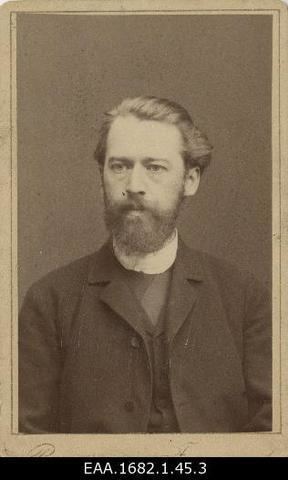Name Carl Axel Role Mathematician | ||
 | ||
Books An Introduction to the Study of the Elements of the Differential and Integral Calculus. from the German of the Late Axel Harnack, with the Permission of the Author Parents Theodosius Harnack, Marie Ewers Siblings Otto Harnack, Erich Harnack, Anna Harnack Similar People Theodosius Harnack, Adolf von Harnack, Otto Harnack, Arvid Harnack | ||
Grandparents Carl Gottlieb Harnack | ||
Carl Gustav Axel von Harnack (7 May 1851, Tartu – 3 April 1888, Dresden) was a German mathematician who contributed to potential theory. Harnack's inequality applied to harmonic functions. He also worked on the real algebraic geometry of plane curves, proving Harnack's curve theorem for real plane algebraic curves.
He was the son of the theologian Theodosius Harnack and the twin brother of theologian Adolf von Harnack (who long outlived him) - all of them from Tartu, which in that time was known as Dorpat, in what is today Estonia. His father was a professor at the University of Tartu, and he studied also himself in the university. After his studies in Tartu, he moved to Erlangen to become a student of Felix Klein. He published his PhD thesis in 1875, and received the right to teach (venia legendi) at the university of Leibzig the same year. One year later he accepted a position at Technical University Darmstadt. In 1877 he married Elisabeth von Öttingen, and they moved to Dresden, where he acquired professorship in the Polytechnikum, which becomes a technical university in 1890. Harnack suffered from health problems from 1882 onwards, forcing him to spend long times in a sanatorium. He published 29 scientific articles and was a well-known mathematician at the time of his death.
The various Harnack inequalities in harmonic analysis and in related discrete and probabilistic contexts are named after him, as are the Harnack's curve theorem and Harnack's principle. The Harnack medal of the Max Planck Society is named after his brother, Adolf von Harnack.
